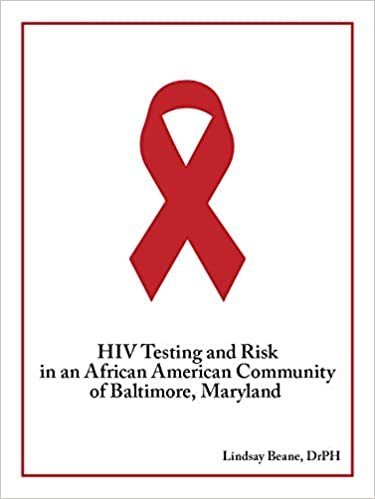 Image 1 of 2
Image 1 of 2

 Image 2 of 2
Image 2 of 2



HIV Testing and Risk in an African American Community
A household study of this scope hasn’t been attempted since W.E.B. Du Bois’s seminal 1899 study of the residents of the Seventh Ward in Philadelphia. At the height of the HIV epidemic in 1999, a large African American Baltimore community was experiencing a stunning 36% annual increase in HIV incidence. Lindsay Beane, a local public health researcher, secured funding from NIH, assembled an 18-member field team, and set out to find out why.
A household study of this scope hasn’t been attempted since W.E.B. Du Bois’s seminal 1899 study of the residents of the Seventh Ward in Philadelphia. At the height of the HIV epidemic in 1999, a large African American Baltimore community was experiencing a stunning 36% annual increase in HIV incidence. Lindsay Beane, a local public health researcher, secured funding from NIH, assembled an 18-member field team, and set out to find out why.
A household study of this scope hasn’t been attempted since W.E.B. Du Bois’s seminal 1899 study of the residents of the Seventh Ward in Philadelphia. At the height of the HIV epidemic in 1999, a large African American Baltimore community was experiencing a stunning 36% annual increase in HIV incidence. Lindsay Beane, a local public health researcher, secured funding from NIH, assembled an 18-member field team, and set out to find out why.
Abstract
HIV/AIDS is a leading cause of death among African Americans living in the United States. HIV testing is both an essential mechanism to support the accurate epidemiological tracking of the disease, and a crucial entry point into treatment for individuals who are infected with HIV.
This cross-sectional study involving a probability sampling of adult residents of an impoverished, African American, high HIV prevalence community in northwest Baltimore was conducted to determine barriers to HIV testing on individual and system levels. The study’s door-to-door household survey approach supported the goal to identify lower risk residents. An 84-question survey instrument, based on a conceptual framework loosely modeled on the Health Belief Model but tailored to an urban minority population, was used to explore both subjects’ internal decision-making around HIV testing and systemic barriers to HIV testing. The instrument was implemented via face-to-face interviews with 223 adults between 18 and 88 years that were conducted in each subject’s home during the winter of 2007.
Regression analysis revealed that knowledge about HIV/AIDS, high risk behaviors, and perceived susceptibility to infection are all significantly associated with HIV testing, and that testing is widespread among 25 to 44-year-olds. Subjects’ main reasons for testing included concerns about exposure and doctors’ recommendations to get tested; subjects’ reasons for not testing included the conviction that committed relationships do not carry risk, and a general lack of concern. The study’s important implications included 1) perceived risk may not correlate with actual risk, and 2) a majority of subjects reported behaviors that place them at medium or high risk for infection. The disconnect between perceived and actual risk was most evident among women whose perceived susceptibility was low even while they reported their male sexual partners’ high risk behaviors.
In summary, while the study found no major barriers to HIV testing among an impoverished, urban, minority population, findings related to risk hold implications for HIV prevention efforts designed to reduce heterosexual transmission of the virus. Further, qualitative research is needed to explore the cognitive, emotional, and socio-cultural aspects of both perceived and actual risk in the African American population.
“Research findings are not usually an exciting read, but Dr. Beane’s compelling work drew me in
and kept me engaged to the very last page!”
Anne Marie O’Keefe, JD, PhD, Clinical Psychologist/Attorney
Associate Professor Morgan State University School of Community Health & Policy